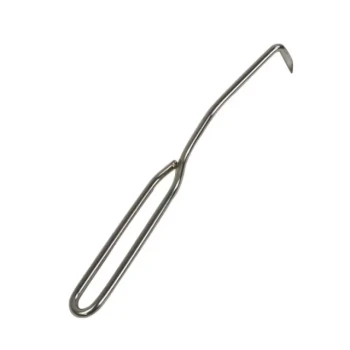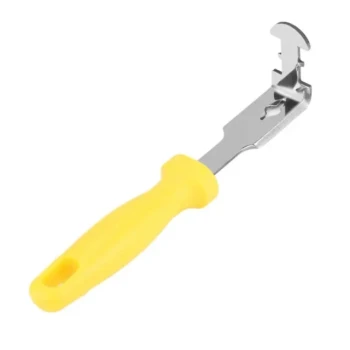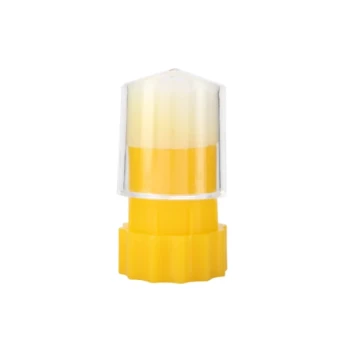At its core, a beekeeping veil is a protective screen for your face, and it is the single most important piece of safety equipment you will own. Veils are primarily categorized by their structure and how they integrate with your other gear: as standalone units that require a separate hat (Square Veils), as all-in-one units with a built-in hat (Round Veils), or as integrated components of a larger garment like a jacket or a full suit (Hood Veils).
The fundamental purpose of any veil is not just to cover your face, but to create and maintain physical space between the mesh and your skin. The best choice for you will balance the level of protection you need with considerations for comfort, visibility, and convenience.
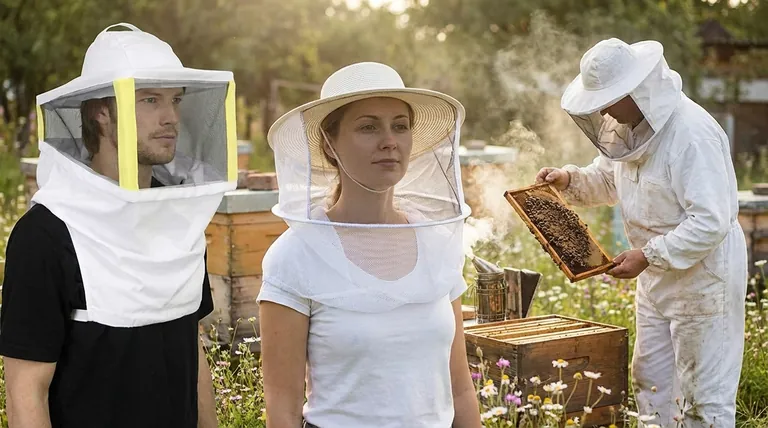
The Goal: Creating a Bee-Proof Barrier
A bee sting on the hand is painful; a sting on the face, particularly near the eye, can be dangerous. The veil is your non-negotiable line of defense.
Why Distance is Everything
A simple mesh covering isn't enough. If the veil's fabric rests against your nose or cheek, a bee can still sting you through it.
Effective veils use rigid hats, wires, or structural design to hold the mesh away from your face from all angles, even when you are bending and moving.
The Importance of a Secure Seal
Your veil must integrate seamlessly with your shirt, jacket, or suit. Any gaps at the neck or chest are an open invitation for a curious bee. Most veils use zippers or strong elastic to create this crucial seal.
Veil Styles and Configurations
While veils can be integrated into jackets or suits, the headpieces themselves generally fall into one of three design categories. Each offers a different user experience.
The Round Veil
This style features a veil attached to a built-in, wide-brimmed hat. It's an all-in-one solution that provides rigid, 360-degree spacing around your head.
Round veils are often favored by beginners for their simplicity and reliable protection. They are easy to put on and ensure the mesh is always held at a consistent, safe distance.
The Square or "Alexander" Veil
This is a more traditional design consisting of a foldable veil with a fabric top and bottom. It is designed to be worn over your own wide-brimmed hat or helmet.
Its primary advantages are versatility and portability. It folds flat for easy storage and allows you to choose the hat that is most comfortable for you.
The Hood Veil
This modern style is a soft, structured hood, almost like the hood on a sweatshirt, with built-in mesh panels. It forgoes the rigid hat structure entirely.
Hood veils offer excellent peripheral vision and are often considered the most comfortable and lightweight option. They are almost always integrated directly into a beekeeping jacket or full suit.
Understanding the Trade-offs
Choosing a veil involves balancing competing priorities. There is no single "best" option, only the best option for your specific needs.
Protection vs. Comfort
A full beekeeping suit with an integrated veil offers maximum protection, covering you from head to ankle. However, it can be hot and cumbersome in warm climates.
Conversely, a standalone veil worn with a thick shirt is much cooler but leaves your arms and torso more exposed. A jacket with an integrated veil is a popular middle ground.
Visibility vs. Durability
The mesh itself is a key factor. Black-colored mesh offers the best visibility by reducing glare, making it easier to see eggs and larvae in the hive.
Some veils use a more rigid wire mesh for durability, while others use softer fabric netting. Softer netting is more comfortable but can be more susceptible to tears, which must be patched immediately.
Integration vs. Modularity
An integrated veil on a jacket or suit is convenient—you can't forget it, and the connection is securely designed with zippers.
A standalone veil offers modularity. You can pair it with any thick shirt or jacket in your wardrobe. This can be a budget-friendly approach, but you must be diligent about ensuring there are no gaps where the veil meets your shirt.
Making the Right Choice for Your Apiary
Select your gear based on the type of beekeeping you plan to do and your personal comfort with bees.
- If your primary focus is maximum safety and frequent inspections: A full suit or a dedicated beekeeping jacket with an integrated hood or round veil is the most reliable choice.
- If your primary focus is balancing convenience with solid protection: A beekeeping jacket with a zip-on veil (either round or hood style) is the most popular and practical solution for most hobbyists.
- If your primary focus is minimalism, budget, or very infrequent checks: A standalone round or square veil paired with a thick, long-sleeved shirt and proper pants provides the essential minimum protection.
Ultimately, your protective gear is a tool that enables you to work calmly and confidently with your bees.
Summary Table:
| Veil Type | Structure | Key Features | Best For |
|---|---|---|---|
| Round Veil | Built-in wide-brimmed hat | All-in-one, 360° protection, easy to use | Beginners, maximum safety |
| Square (Alexander) Veil | Worn over your own hat | Foldable, portable, versatile | Experienced beekeepers, budget-conscious |
| Hood Veil | Integrated with jacket/suit | Lightweight, excellent visibility, comfortable | Frequent inspections, warm climates |
Ready to equip your apiary with the right protective gear?
As a trusted wholesale supplier to commercial apiaries and distributors, HONESTBEE provides durable, high-performance beekeeping veils and full protective suits designed for professional use. We help you maximize safety and efficiency during hive inspections.
Contact our experts today to discuss bulk pricing and custom solutions for your operation: Get in Touch
Visual Guide
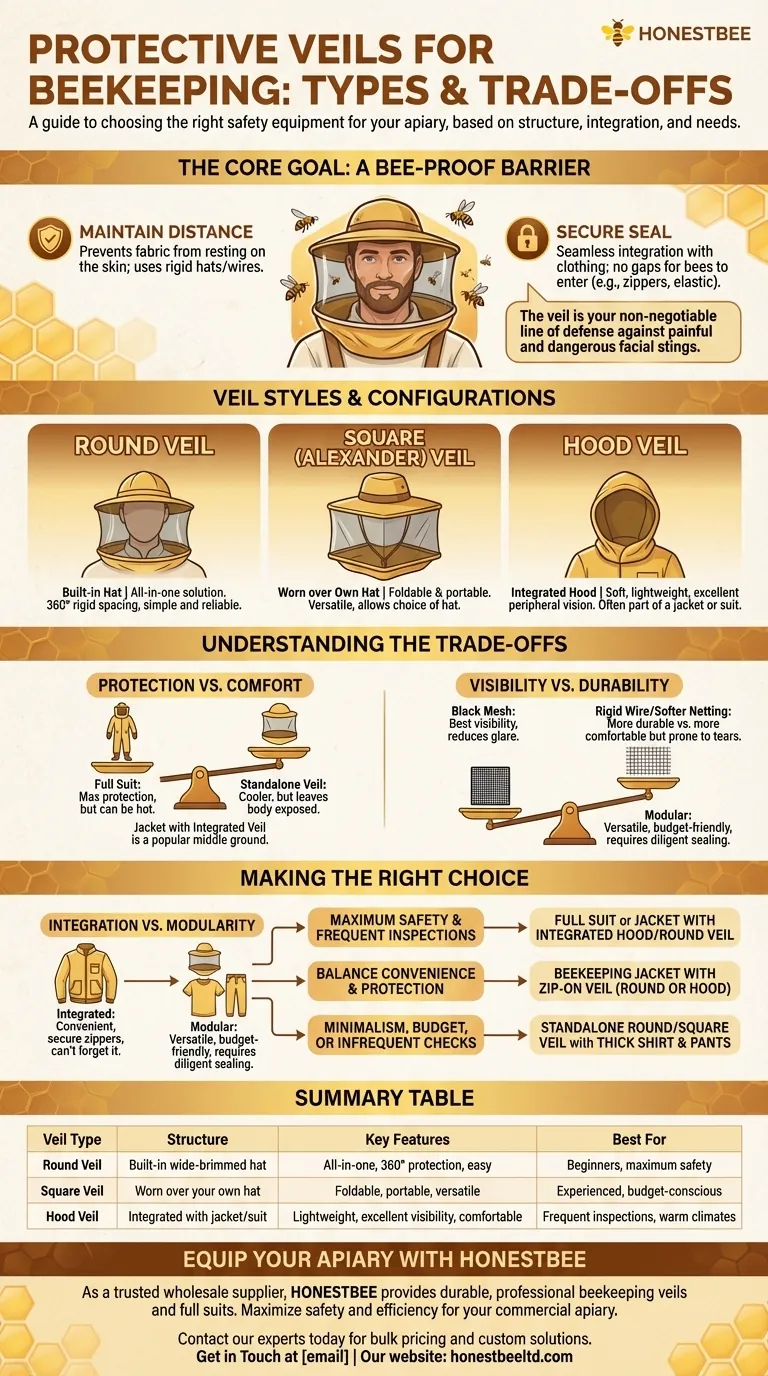
Related Products
- Cotton Folding Square Beekeeping Hat and Veil with Removable Mesh Bee-Proof Design
- Ventilated Adult Beekeeping Helmet Hat for Beekeepers
- Wholesales Dadant Size Wooden Bee Hives for Beekeeping
- Professional Insulated Plastic Bee Hives
- Yellow Plastic Bucket Pail Perch for Beekeeping
People Also Ask
- What is the function of a beekeeper hat and veil? Essential Head & Face Protection for Beekeepers
- Which type of bee veil offers the best protection? Maximize Safety with Proper Space and Design
- What factors should be considered when purchasing a beekeeping suit or jacket? Your Guide to Safety and Comfort
- What is the difference between a beekeeping suit and a jacket? Choose the Right Protection for Your Apiary
- What types of head protection are available for beekeepers? Choose the Right Veil for Safety & Confidence










